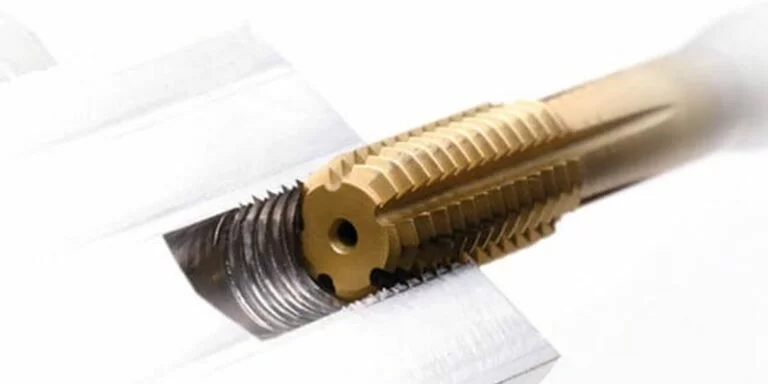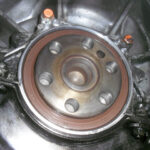Introduction to How Deep Can i Tap 3/8 Hole
When it comes to tapping holes, precision is key. But how deep can you actually tap a How Deep Can i Tap 3/8 Hole? Whether you’re a seasoned DIY enthusiast or just starting out with your projects, understanding the ins and outs of tapping can make all the difference in achieving professional results. Tapping isn’t just about creating threads; it’s also about knowing your tools, materials, and techniques to ensure everything fits perfectly together. Dive into this guide where we’ll explore the essentials of tapping a 3/8 hole effectively and safely. Get ready to elevate your skills!
Understanding the Basics of Tapping: What is Tapping?
Tapping is a machining process that creates internal threads in a pre-drilled hole. It’s essential for ensuring that screws and bolts can securely fit into various materials.
The tool used for this task is called a tap. Taps come in different sizes and styles, designed to match the specific diameter and thread pitch of the fastener being used.
During tapping, the tool rotates while slowly advancing into the material. This action cuts threads into the sides of the hole, providing a sturdy anchor point.
Tapping can be performed by hand or with machines like drill presses or CNC equipment. The method chosen often depends on factors such as precision needed and material type.
Understanding these fundamentals sets you up for success when tackling your next project involving threaded holes.
Choosing the Right Drill Bit and Tap for Your Project
Selecting the right drill bit and tap is crucial for successful tapping. The size of your hole determines the type of tap you will use, so it’s essential to understand taper taps versus plug taps.
Taper taps are ideal for starting threads. They have a gradual lead-in that makes alignment easier. Plug taps, on the other hand, are better for deeper holes as they provide more threading engagement without cutting too much material at once.
When choosing a drill bit, ensure it matches the diameter required for a 3/8-inch tap. This precision prevents binding and ensures clean threads. A good rule is to select a bit about 0.1 inches smaller than your desired tapped size.
Material also matters—high-speed steel (HSS) bits work well in most metals, while cobalt or carbide options may be necessary for tougher materials like stainless steel or hardened alloys. Always consider your project’s specific needs before making your choice.
Factors Affecting How Deep You Can Tap a 3/8 Hole
Several factors influence how deep you can tap a 3/8 hole. The material being tapped plays a crucial role. Softer materials like aluminum allow deeper taps, while harder metals may limit depth due to increased resistance.
Another key aspect is the type of tap used. Tapered taps are designed for easier entry and can often go deeper than straight taps, which might struggle in certain materials.
The drill bit size also matters. A correctly sized bit ensures that the threads created during tapping have enough room to form properly without compromising strength.
Additionally, coolant or lubricant aids in reducing friction and heat build-up. This not only prolongs tool life but also allows for deeper tapping by minimizing wear on both the tap and the material itself.
Your technique can greatly affect results too; applying consistent pressure helps avoid stripping threads or breaking tools mid-process.
Tips and Techniques for Successful Tapping
Successful tapping requires precision and patience. Start by ensuring your workpiece is securely clamped to avoid movement during drilling. Stability is key.
When choosing your tap size, remember that a 3/8 hole typically allows for a maximum depth of about 1 inch when using standard taps. Keep this in mind as you plan your project.
Apply cutting fluid generously to reduce friction and heat while tapping. This not only prolongs the life of your tools but also improves thread quality.
Maintain a steady pressure while turning the tap, allowing it to cut into the material gradually. Back off occasionally to clear any chips that may accumulate.
Using an appropriate tap handle can provide better leverage and control, making it easier to achieve that perfect thread depth without straining yourself or damaging the tap.
Safety Precautions to Keep in Mind
When tapping a 3/8 hole, safety should always come first. Ensure you wear proper eye protection to shield against metal shavings and debris that can fly during the process.
Using gloves can protect your hands from sharp edges, but choose wisely. Thin gloves might hinder dexterity, while thick ones could reduce grip on tools.
Keep your workspace clean and well-lit. A cluttered area increases the risk of accidents. Make sure all tools are in good condition before starting.
Secure your workpiece tightly in a vise or clamp. This prevents movement that could lead to injury or inaccuracies while tapping.
Take breaks if you’re feeling fatigued. Fatigue can lead to poor judgment and mistakes in your project, so stay alert for better results ahead.
Common Mistakes to Avoid When Tapping a 3/8 Hole
Tapping a 3/8 hole can be straightforward, but common mistakes often derail the process. One major error is not using the correct tap size. A mismatch can lead to weak threads or even damage to both the tap and material.
Another frequent misstep involves inadequate lubrication. Failing to apply cutting oil increases friction, resulting in premature wear on your tools and poor thread quality.
Forgetting about chip removal is equally problematic. Accumulated chips can obstruct your progress and ruin the integrity of your tapped hole.
Also, don’t rush through tapping. Applying too much force might seem tempting but usually ends with broken taps or stripped threads.
Neglecting proper alignment when starting a tap can cause uneven threading and complications down the line. Careful attention at every step ensures better results every time you tackle this project.
Conclusion: Reaching the Desired Depth in Your Tapping Project
Achieving the right depth when tapping a 3/8 hole is an essential skill for any DIY enthusiast or professional. Knowing how deep to go ensures that your threads are strong and secure.
The key lies in understanding both the material you’re working with and the specifications of your tap. Take time to measure accurately before starting. This prevents mistakes that could compromise your project.
Experimentation can also be beneficial. If you feel unsure, practice on scrap material first. It builds confidence and hones your technique.
Remember that patience pays off in precision work like this. Rushing through can lead to errors, while careful attention will yield better results every time.
FAQs
Tapping a 3/8 hole can open up various possibilities for your projects. Many factors influence how deep you can tap, and understanding these will help ensure successful results.
When it comes to FAQs regarding tapping a 3/8 hole, here are some common queries:
**How deep can I tap a 3/8 hole?**
Generally, the recommended depth for tapping is about one-and-a-half times the diameter of the screw. For a 3/8 inch tap, that means you can typically go around 9/16 inches deep.
**What type of material am I tapping into?**
The material being tapped plays a significant role in determining depth. Softer materials like aluminum may allow deeper taps compared to harder metals such as steel.
**Do I need special tools for tapping?**
While basic taps and drill bits work for most applications, specialized tools like tapered taps or spiral fluted taps might be necessary depending on your project’s specific requirements.
**What if my tap breaks while I’m working?**
If this happens, don’t panic! Use an easy-out extractor to remove broken pieces carefully. Always keep extra taps handy just in case.
Understanding these aspects will enhance your confidence when tackling any project involving tapped holes!

















